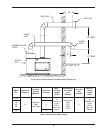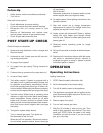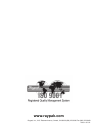
40
Monthly:
1. Check for piping leaks around circulators, mixing
valves, relief valves, and other fittings. If found,
repair at once. DO NOT use petroleum-based stop
leak compounds.
2. Visually inspect burner flame.
3. Visually inspect venting system for proper func-
tion, deterioration or leakage.
4. Check air vents for leakage.
Quarterly:
1. Check relief valve. Refer to manufacturer’s
instructions on valve.
2. Test low water cut-off, if used. Refer to manufac-
turer’s instructions.
3. Clean screen and air filter in intake.
APPENDIX
Inside Combustion Air
Contamination:
All heaters experience some condensation during
start-up. The condensate from flue gas is slightly
acidic. In most cases the pH level is not harmful to
vents or drains. When combustion air is contaminated
by vapors from products in areas listed below, the
acidic levels in the condensate increase. Higher acidic
levels attack many materials, including stainless steel
commonly used in high efficiency systems.
The heater can use special corrosion-resistant non-
metallic intake vent material. You may, however,
choose to use outside combustion air for one or more
of these reasons:
• installation is in an area containing contaminants
listed below which will induce acidic condensation.
• you want to reduce infiltration into your building
through openings around windows and doors.
• you are using AL29-4C stainless steel vent pipe,
which is more corrosion-resistant than standard
metallic vent pipe. In extremely contaminated
areas, this may also experience deterioration.
Products causing contaminated combustion air:
• spray cans containing chloro/fluorocarbons
• permanent wave solutions
• chlorinated waxes/cleaners
• chlorine-based swimming pool chemicals
• calcium chloride used for thawing
• sodium chloride used for water softening
• refrigerant leaks
• paint or varnish removers
• hydrochloric acid/muriatic acid
• cements and glues
• antistatic fabric softeners used in clothes dryers
• chloride-type bleaches, detergents, and cleaning
solvents found in household laundry rooms
• adhesives used to fasten building products
• ... and other similar products.
Areas causing contaminated combustion air:
• dry cleaning/laundry areas and establishments
• metal fabrication plants
• beauty shops
• refrigeration repair shops
• photo processing plants
• auto body shops
• plastic manufacturing plants
• urniture refinishing areas and establishments
• new building construction
• remodeling areas.
Check for areas and products as listed above before
installing heater. If found:
• remove products permanently, OR
• provide outdoor combustion air.


















